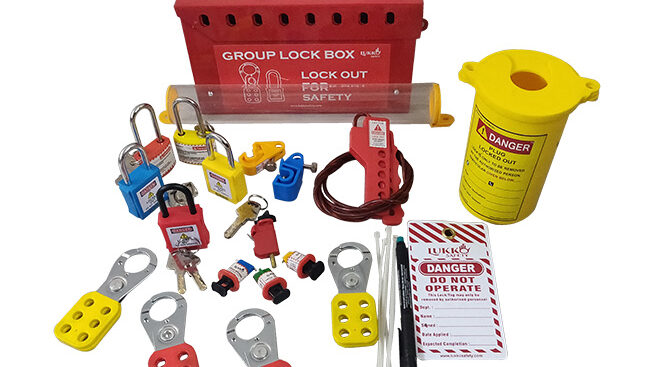Lockout tagout (LOTO) procedures are essential for preventing hazardous energy accidents in the construction industry. The construction industry is one of the most dangerous industries, with workers at risk of being exposed to hazardous energy sources such as electrical, hydraulic, pneumatic, and mechanical energy. LOTO procedures can prevent the release of hazardous energy during maintenance, repair, and construction activities. In this blog post, we will discuss the lockout tagout procedures specific to the construction industry.
- Conduct a Hazard Assessment
Before starting any construction project, it’s important to conduct a hazard assessment to identify potential hazardous energy sources and assess the risks associated with each. This can be done by reviewing equipment manuals, conducting walk-throughs of the construction site, and consulting with employees.
- Develop a LOTO Program
Once potential hazardous energy sources have been identified, a LOTO program should be developed. This program should include the following elements:
- Identification of hazardous energy sources
- LOTO procedures for each energy source
- Authorized employees who are responsible for implementing and removing LOTO procedures
- Procedures for verifying that all hazardous energy sources have been isolated before work begins
- Train Employees
All employees involved in construction activities should receive training on LOTO procedures. This training should include the following topics:
- The purpose and importance of LOTO procedures
- How to identify hazardous energy sources
- How to implement and remove LOTO procedures
- The importance of verifying that all hazardous energy sources have been isolated before work begins
- The consequences of not following LOTO procedures
- Provide LOTO Devices and Equipment
Employers should provide LOTO devices and equipment for use by authorized employees. These devices and equipment should be compatible with the energy sources present in the construction site and should be properly maintained and inspected.
- Review and Update the LOTO Program
The LOTO program should be reviewed and updated regularly to ensure that it remains current and effective. This can include reviewing incident reports, conducting audits of LOTO procedures, and incorporating feedback from employees.
Conclusion
LOTO procedures are crucial for preventing hazardous energy accidents in the construction industry. By conducting a hazard assessment, developing a LOTO program, training employees, providing LOTO devices and equipment, and regularly reviewing and updating the program, employers can ensure that their employees are protected from hazardous energy sources. This not only promotes a safe working environment but also helps to prevent serious injuries or fatalities in the construction industry.
For more details contact us – lukkosafety

